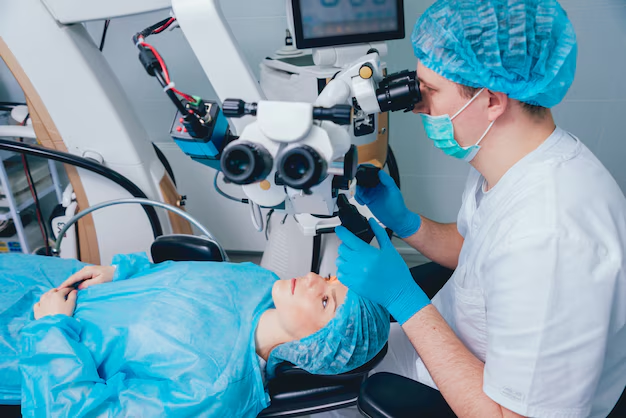Understanding Cataract Surgery: A Thorough Exploration for Patients
Cataract surgery is often regarded as a routine procedure, yet it marks a significant event in the lives of those who undergo it. With advancements in medical technology, the dread and complications associated with this surgery have drastically diminished. But what happens during cataract surgery? This guide navigates through the entire process, offering insights into what patients can expect before, during, and after the procedure. Whether you or a loved one are contemplating cataract surgery, equipping yourself with knowledge can alleviate concerns and enhance your readiness.
🌟 The Importance of Cataract Surgery
Cataracts are a leading cause of vision impairment, primarily affecting the aging population. The lens of the eye becomes clouded, leading to blurred vision, sensitivity to light, and difficulty seeing at night. Left untreated, cataracts can significantly deteriorate quality of life, making everyday activities challenging.
Why Consider Surgery?
- Improved Vision: Cataract surgery can significantly restore clear vision, allowing individuals to engage in activities they enjoy, from reading to driving.
- Quality of Life: Enhancing vision can improve overall well-being and independence.
- Preventative Measure: As cataracts progress over time, surgery helps prevent further vision loss.
🏥 Preparing for Cataract Surgery
The road to clearer vision starts well before the surgery date. Preparation involves several key steps to ensure a smooth process.
Initial Consultation
Before surgery, an eye examination is conducted to evaluate the cataract's severity and overall eye health. Eye measurements will be taken to determine the appropriate lens replacement.
Choosing the Right Lens
Cataract surgery involves replacing the clouded lens with an artificial one, known as an intraocular lens (IOL). Patients can choose from several types of IOLs:
- Monofocal Lenses: Clear vision at one distance, usually set for distance vision.
- Multifocal Lenses: Offer vision at multiple distances, reducing the need for glasses.
- Toric Lenses: Designed for patients with astigmatism, providing clearer vision.
Pre-Surgery Instructions
Patients may be asked to:
- Fast for a few hours before the procedure.
- Use prescribed eye drops to prevent infection and reduce inflammation.
- Arrange for transportation home post-surgery, as driving is not recommended immediately afterward.
👁️ The Cataract Surgery Procedure
The notion of eye surgery can be daunting, but understanding the process can put anxieties to rest. Here’s a step-by-step overview of what happens during cataract surgery.
Day of the Surgery
Upon arrival at the surgical center, you'll be prepped for the procedure. This includes:
- Anesthetic Drops: Numbing eye drops are applied to ensure comfort during the surgery.
- Mild Sedation: Often, a light sedative is administered to help patients relax.
During the Procedure
Cataract surgery generally takes about 15 to 30 minutes and consists of several key stages:
- Microincision: A small incision is made on the cornea to access the eye's interior.
- Phacoemulsification: A tiny probe uses ultrasound waves to break up the cloudy lens, which is then gently removed.
- Lens Insertion: The selected IOL is implanted through the same incision, unfolding and settling into position.
- Incision Closure: The incisions are small enough to heal on their own and typically don’t require stitches.
Post-Surgery Monitoring
After the surgery, patients are moved to a recovery area where medical staff monitor them for a short period. Most patients can return home the same day.
🕶️ Post-Operative Care and Recovery
Proper post-surgery care is crucial to ensure healing and optimal results.
Immediate Aftercare
- Eye Patch or Shield: To protect the eye, a patch may be used temporarily.
- Follow-Up Appointments: Critical for monitoring the healing process and addressing any concerns or complications.
Recovery Tips
- Avoid Rubbing: It’s important to refrain from touching or applying pressure to the eye.
- Follow Prescriptions: Use prescribed eye drops to aid healing and prevent infection.
- Limit Activities: Avoid strenuous activities and heavy lifting for a few weeks post-surgery.
What to Expect
- Vision Improvement: Most patients notice improved vision within a few days, although complete healing takes several weeks.
- Temporary Side Effects: Mild discomfort, light sensitivity, or blurred vision may occur but typically resolve quickly.
📝 Quick Recovery Guide: Key Takeaways
Here’s a snapshot of important tips for a smooth recovery:
- 🤓 Use eye protection: Wear sunglasses outdoors to shield eyes from bright light.
- 🚫 Avoid water and dust: Protect your eyes from environments that could introduce irritants.
- 💊 Adhere to medication schedule: Consistency with prescribed drops is paramount to avoid complications.
- 🗓️ Attend follow-ups: Ensure all scheduled visits are attended for professional monitoring.
🌐 Exploring Further: Addressing Common Concerns
As you get ready for the journey through cataract surgery, addressing common concerns can help you feel more at ease and informed.
Will I Need Glasses After?
Whether you'll need glasses post-surgery depends on the type of lens chosen and your specific vision needs. Some might still require reading glasses or correction for astigmatism, but many find their dependency on glasses reduced.
Are There Risks?
Cataract surgery is generally safe, but like any surgery, it carries potential risks such as infection, swelling, or retinal detachment. Discuss these risks with your eye surgeon to understand them in context.
When Can I Resume Daily Activities?
Most individuals return to normal activities within a few days, but it's important to listen to your body and attend follow-ups for tailored advice on resuming more demanding tasks.
🎯 The Path Ahead: Embracing Clear Vision
Cataract surgery represents more than a medical procedure; it is a step toward regaining independence and enhancing quality of life. The journey encompasses preparation, precision surgery, and deliberate recovery—all aiming to restore the gift of sight. Whether you're preparing for surgery or know someone who is, a detailed understanding of the process empowers you to face it with confidence and clarity. By focusing on informed choices and proactive care, patients can look forward to seeing the world anew.
